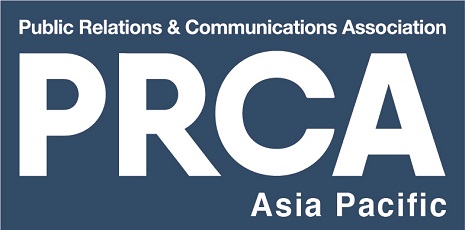PRCA SEA research paints picture of Asia-Pacific’s PR practice

Singapore, 28th November, 2019 – PRCA SEA research paints picture of Asia-Pacific’s PR practice.
- PR practitioners work nearly a whole extra day a week on top of contracted hours
- Three-fifths of respondents consider PR a profession rather than an industry
- Digital, strategy, and reputation increasingly key parts of PR toolkit, respondents say
PR and communications professionals in Asia-Pacific are working overtime to deal with the demands of the clients and organisations they serve, says a major new report on the region’s communications sector.
The study, which includes insights from leading PR practitioners, also finds the sector’s cosmopolitan workforce increasingly prioritising digital channels, reputation management, and strategy development in their work.
The inaugural PR Asia-Pacific PR and Communications Census , based on more than 500 responses to a survey conducted earlier this year, is published today by the Public Relations and Communications Association (PRCA). It follows the launch of PRCA Southeast Asia in September 2018.
‘Tackle mental health proactively’
The ‘Wellbeing’ chapter of the report shows:
- PR professionals in the region are contracted to work an average of 39 hours per week, but on average work seven hours longer than that
- 31% of respondents make work-related calls or emails outside of office hours every day
- 6% say they have been diagnosed with a mental health condition – a figure which rises to 11% among those aged under 35
- In-house practitioners are more likely than those in agencies to get benefits relating to their health or wellbeing such as health checks or stress management workshops
- 55% of employed respondents have applied for flexible working arrangements
Nitin Mantri, President, International Communications Consultancy Organisation (ICCO) and Group CEO of India’s AvianWE, comments in the report: “Mental health is a huge issue and the industry needs to tackle the problem more proactively. Workplace mental health policies should become a norm. Sustained efforts should be taken to encourage conversations around mental health because awareness and sensitivity will play a crucial role in bringing meaningful change.”
‘Back to what PR should be doing’
The ‘Opinions’ chapter of the report shows:
- Respondents said that digital and social media, and online communication, are becoming more important parts of their work, while sales promotion and general media relations are becoming less important
- The most common main function of PR professionals in the region is communications strategy development
- Three in five respondents consider it a profession as opposed to an industry
- A range of different evaluation methods are used in the region – while Advertising Value Equivalents (AVEs) is the single most common, it is not that common in overall terms
Clara Ly-Le MPRCA, Managing Director, EloQ Communications, comments: “PR, in its very essence, is about building and maintaining reputation, not about directly increasing sales – this is a part of marketing. That misunderstanding has gone a long way, but it now seems like we’re back to doing what PR should be doing.”
Pay and people
The ‘Wellbeing’ chapter of the report shows:
- The region’s PR workforce is predominantly female (61%), but among respondents above the age of 45, women are in the minority (44%).
- It is also predominantly young, with a median age of 35.
- More than half speak at least one language in addition to English.
- 2% say they have a physical condition or disability which limits their daily activity.
- 94% of respondents have been to university, with 29% of those having studied PR
- Women are likely to earn less and are less likely to receive a bonus than men.
- The majority of respondents have received a pay rise in the past year, and these are slightly more common for younger professionals, and for those based in agencies.
Eva Sogbanmu, Executive Director (Communications), Asia-Pacific, JLL, comments: “I personally would like to see more diversity in background, ethnicity, and gender at all levels of the profession – I also think that we need to work hard to demonstrate that PR is a rewarding career to consider for those who are not marketing, communications, or business graduates.”
The full report is available from the PRCA SEA website.
PRCA SEA Chairman Lee Nugent CMPRCA and General Manager Tara Munis MPRCA write in a joint introduction to the report: “We want this publication to be the definitive analysis of where we are now, and what the future holds, as a profession in the region. It will help us better understand our work, and the challenges and opportunities we face as part of a growing, progressive industry in the world’s most exciting region.”
Please direct media enquiries or interview requests to:
- Tara Munis ([email protected], +65 8596 5743) – based in Singapore
- Sam Burne James ([email protected], 0044 7848 380 394) – based in London
- Harry Gardiner ([email protected], 0044 2072 236 026) – based in London
-ENDS-
About PRCA
Who we are: Founded in 1969, the Public Relations and Communications Association (PRCA) is a UK-based PR and communications membership body with offices in the Middle East & North Africa and Southeast Asia, operating in 66 countries around the world. Representing in excess of 30,000 people, the PRCA is the largest PR membership association in the world. The PRCA promotes all aspects of public relations and communications work, helping teams and individuals maximise the value they deliver to clients and organisations.
What we do: The Association exists to raise standards in PR and communications, providing members with industry data, facilitating the sharing of communications best practice and creating networking opportunities.
How we do it and make a difference: All PRCA members are bound by a professional charter and codes of conduct, and benefit from exceptional training. The Association also works for the greater benefit of the industry, sharing best practice and lobbying on the industry’s behalf e.g. fighting the NLA’s digital licence.
